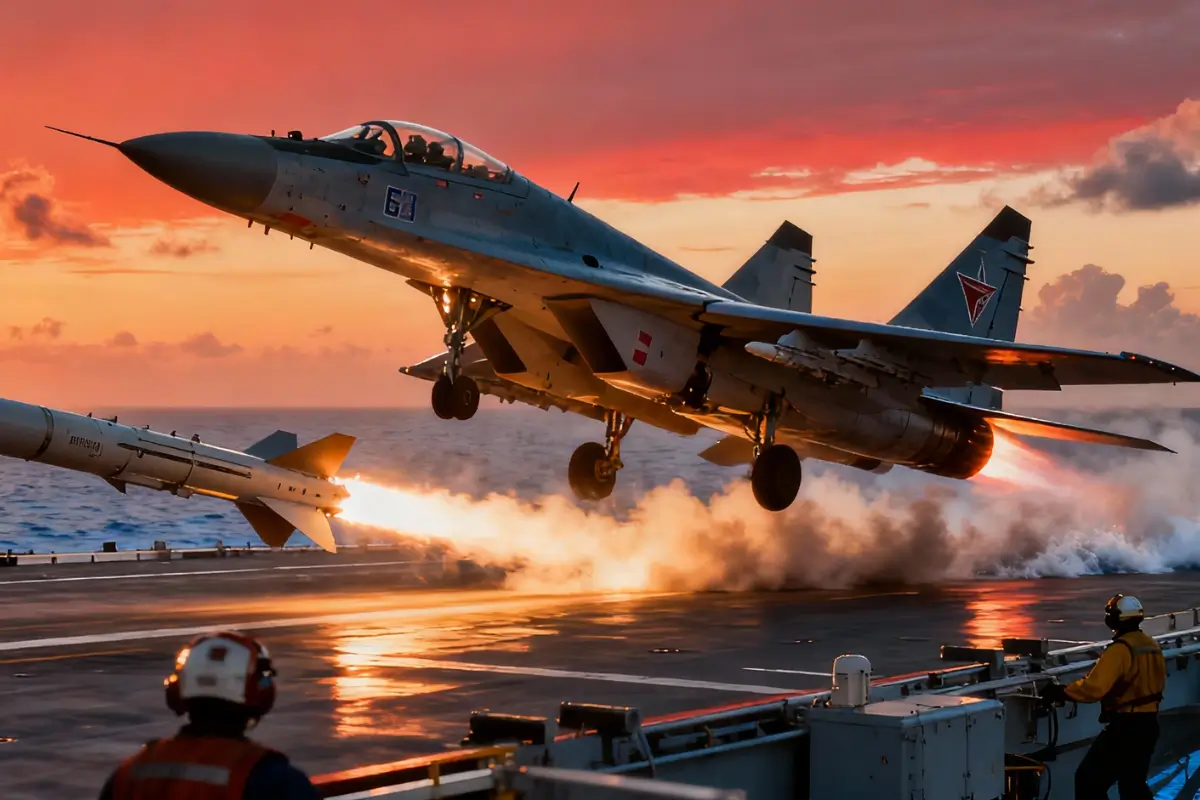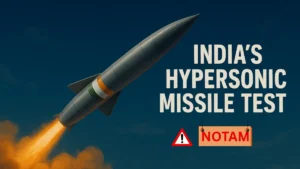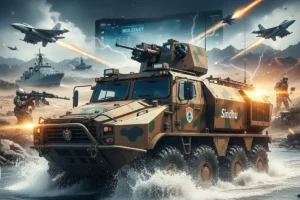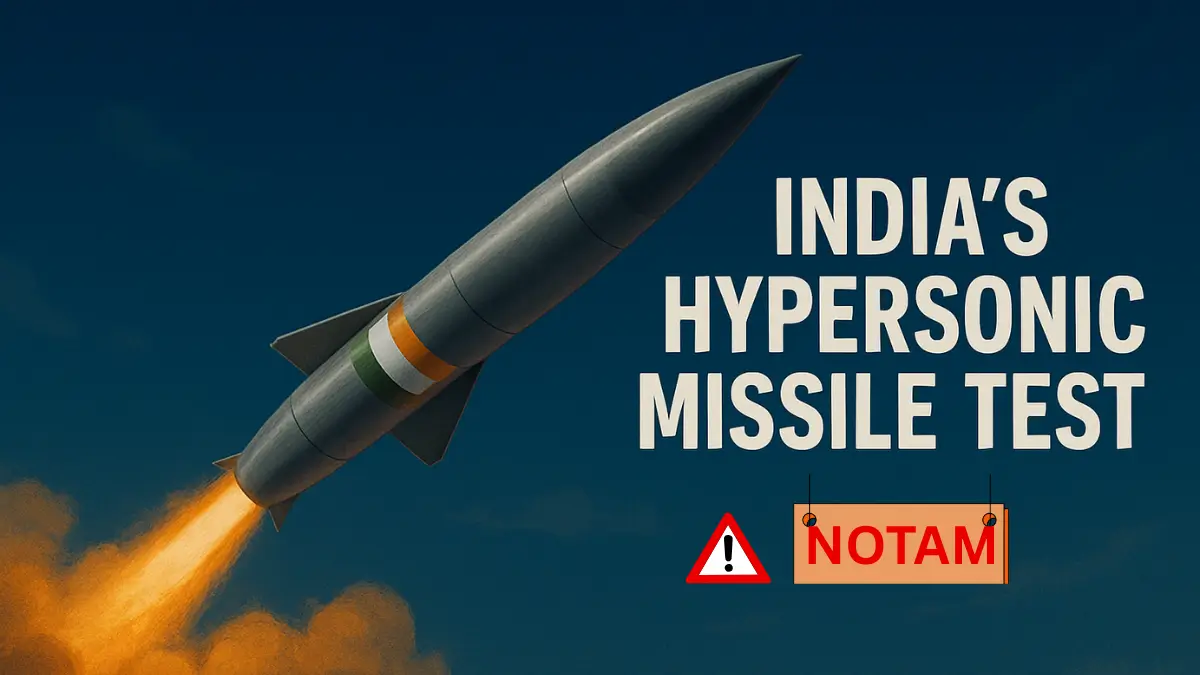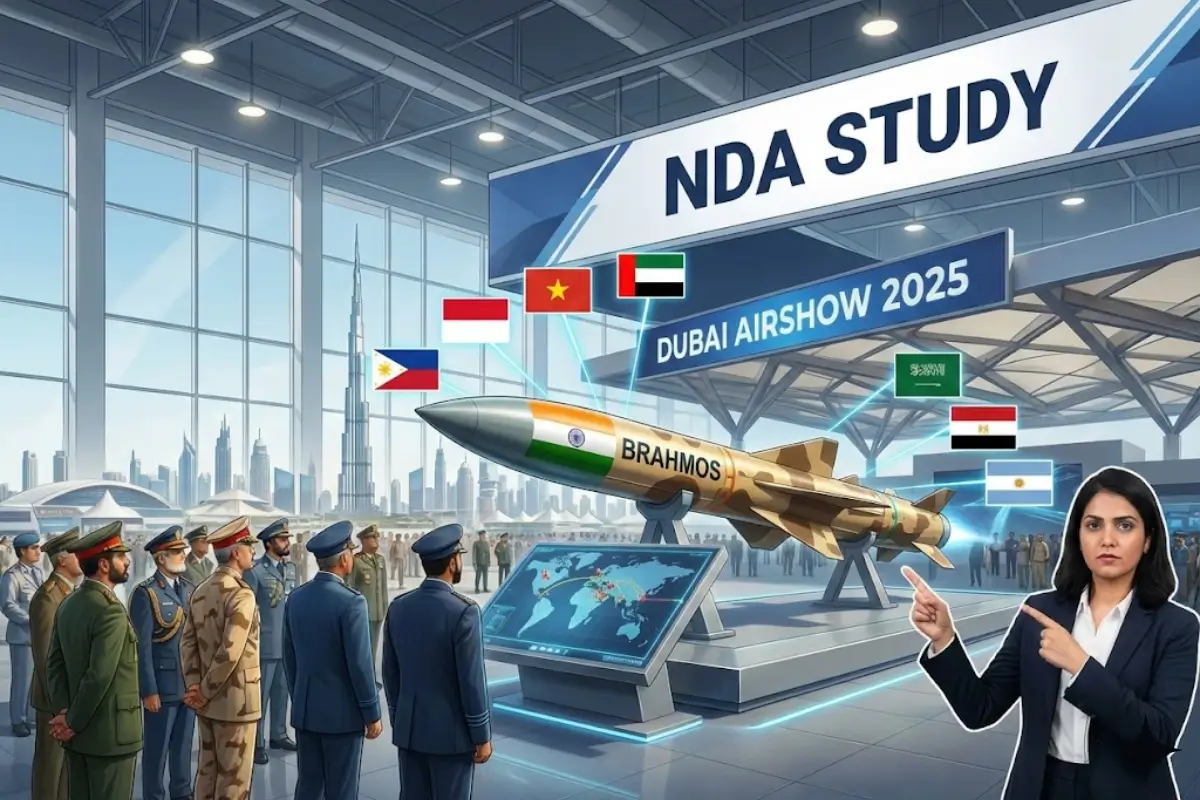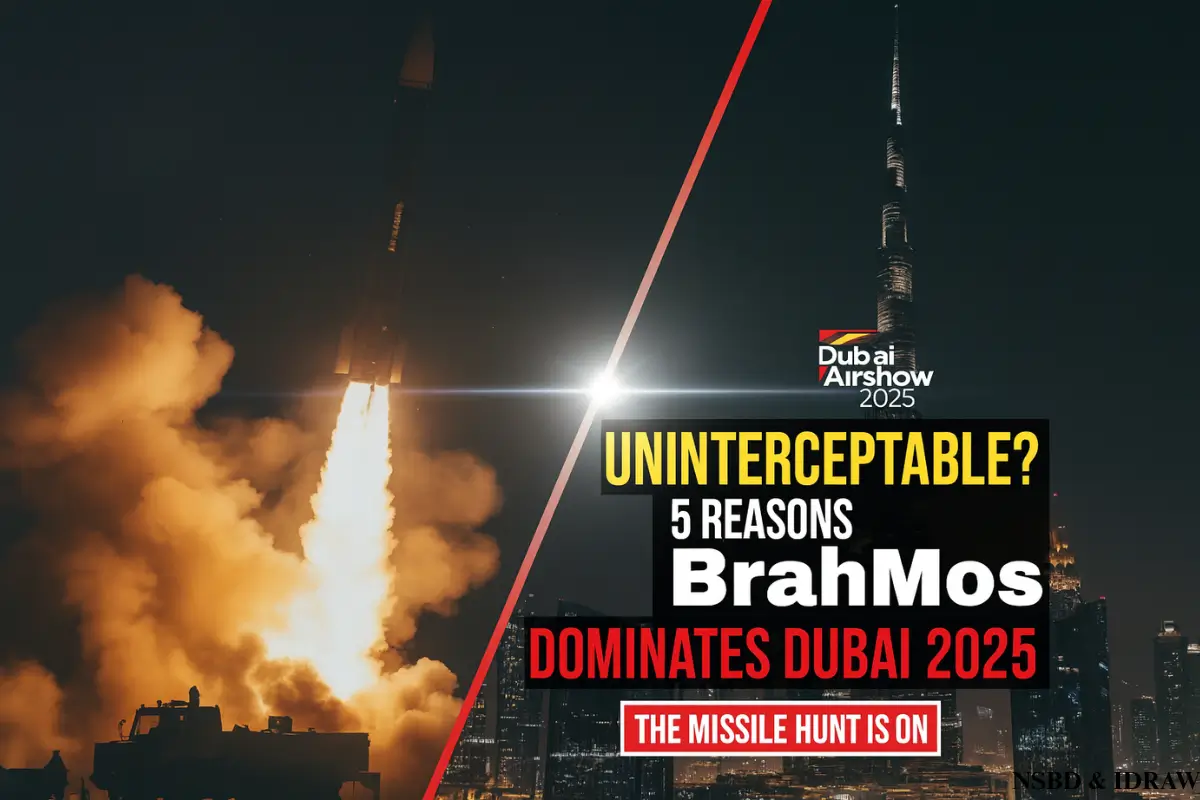India’s military is making a bold move that could change the balance of power in the Indian Ocean. The Indian Navy is fast-tracking the integration of the Astra Mk2 missile—a homegrown weapon with a range of 160+ kilometres—onto two of its most critical fighter jets: the Rafale M and MiG-29K. This isn’t just another weapons upgrade. It’s India’s direct answer to the Chinese PL-15 missile threat and a massive step toward Aatmanirbhar Bharat (self-reliant India) in defence technology.
But here’s the critical part: India’s current naval air defences are falling behind. Pakistani jets now carry China’s PL-15E missiles with a 145km range, and Chinese fighters boast even longer-range variants. India’s existing MICA missiles max out at just 80km—a dangerous gap. The Astra Mk2 changes this equation entirely, giving Indian Navy fighters the reach and firepower to engage enemy aircraft before they ever get close to our aircraft carriers. Let’s break down what’s happening, why it matters, and what it means for India’s future security.
What is Astra Mk2? ( Air-to-Air Missile )
The Astra Mk2 missile is a Beyond Visual Range (BVR) air-to-air missile developed by India’s Defence Research and Development Laboratory (DRDL) under DRDO. Think of it as a long-range interceptor that pilots can fire at enemy aircraft from dozens of kilometres away—far beyond what the human eye can see.
Key Specifications at a Glance
- Range: 160-200 kilometres (can be extended beyond 200km)
- Speed: Mach 4.5 (approximately 5,400 km/hour)
- Warhead: 15-20 kilogram high-explosive fragmentation
- Guidance System: Inertial Navigation + Mid-course Datalink + Active AESA Radar Seeker
- Motor: Dual-pulse solid rocket motor
- Indigenous Content: 95%+ Indian-made components
How the Dual-Pulse Motor Works (Simple Explanation)
Here’s something that makes Astra Mk2 special: its dual-pulse motor. Most missiles use a single engine burn. The Astra has two:
First Pulse: Launches the missile at supersonic speed (Mach 4.5), getting it to the target area quickly.
Second Pulse: Ignites during the final phase to maintain speed and energy as the missile approaches its target. This “second wind” is crucial because enemy fighters are constantly moving and manoeuvring. By the time your missile arrives, the target might have shifted positions. The second pulse ensures the Astra still has enough energy to catch and destroy the target.
Why This Matters: This dual-pulse design extends the missile's effective range and kill probability at extreme distances—exactly what the Indian Navy needs against long-range missile threats.
Astra Mk2 vs China’s PL-15 (Comparison)
Let’s put the Astra Mk2 directly against the threats India actually faces.
Comparison Table
| Feature | Astra Mk2 | China’s PL-15 (Domestic) | China’s PL-15E (Pakistan) | US AIM-120D |
|---|---|---|---|---|
| Range | 160-200 km | 200-300 km | 145 km (export-limited) | 160 km |
| Speed | Mach 4.5 | Mach 5.0 | Mach 5.0 | Mach 4.0 |
| Guidance | AESA Active Radar | AESA Active Radar | AESA Active Radar | Active Radar |
| Seeker | Indigenous RF Seeker | Chinese | Chinese | US-made |
| Cost | ₹7-8 crore (~$850K) | $1.5-2 million | $1.5-2 million | $1-1.2 million |
| Status | Testing (IOC 2026) | Operational since 2015 | Operational (240 in Pakistan) | Operational |
What This Comparison Tells Us
The Good News: Pakistan’s F-16s and JF-17s carry the export-limited PL-15E with just 145km range. Astra Mk2’s 160km range outranges them, giving Indian Navy fighters a decisive advantage.
The Challenge: China’s domestic PL-15 reaches 200-300km. However, India’s DRDO plans to extend Astra Mk2 beyond 200km in the next development phase, closing this gap.
The Advantage: While China’s missile is faster (Mach 5 vs Mach 4.5), India’s indigenous AESA seeker, superior electronic countermeasures (ECCM), and 95% indigenous content make Astra Mk2 strategically valuable. Plus, it costs significantly less than foreign alternatives.
MiG-29K: India’s Current Carrier Fighter Gets a Deadly Upgrade
The MiG-29K is Russia’s carrier-based fighter that India has been operating from INS Vikramaditya since 2012. It’s a proven platform, but it’s ageing. Currently, MiG-29K carries Russian R-27 missiles (80km range) and anti-ship missiles. These weapons are now obsolete against modern threats.
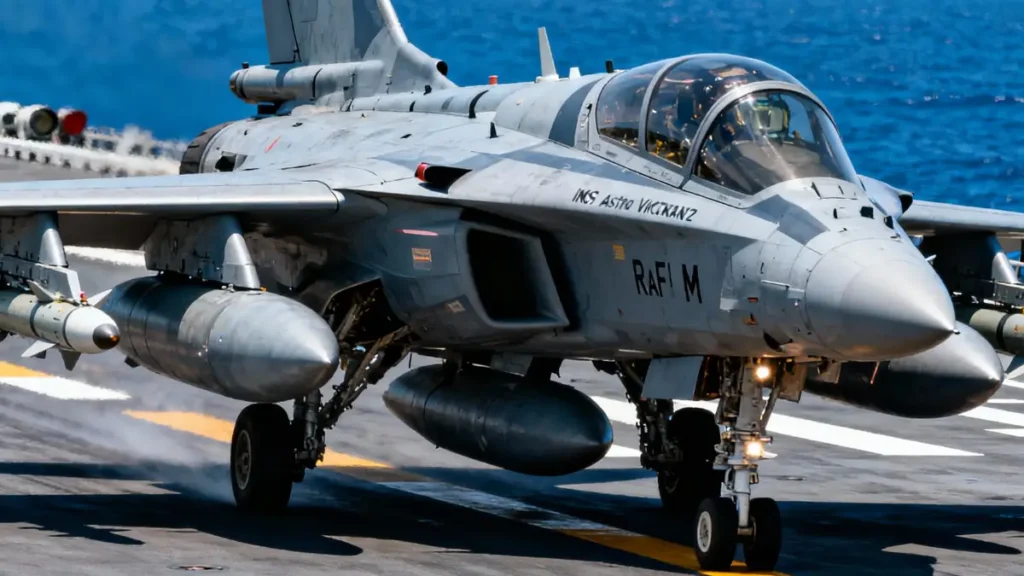
MiG-29K Astra Mk2 Integration: Timeline & Status
Current Situation:
- 16 MiG-29Ks operational on INS Vikramaditya
- Equipped with Zhuk-ME radar (Russian system, not AESA)
- Carrying older R-27 and Kh-35 missiles
What’s Changing:
The Indian Navy is actively integrating Astra Mk2 onto MiG-29K. Here’s the timeline:
- 2025-2026: Weapon firing trials begin
- Mid-2026: Operational deployment expected
- 2027 Onward: Full fleet integration across MiG-29K squadron
The Challenge: Radar Limitations
Here’s where it gets complicated. The MiG-29K has a Zhuk-ME radar (not AESA), which can detect targets up to 110km away but isn’t as advanced as modern AESA systems.
The Problem: Astra Mk2 can hit targets 160km away, but Zhuk-ME can only “see” 110km out. This means the missile could theoretically work beyond the radar’s detection range, limiting its effectiveness.
The Solution: India is exploring upgrading the MiG-29K’s radar. The HAWK I 900 indigenous AESA radar is being developed as a replacement. This would fully unlock Astra Mk2’s potential.
Despite this limitation, integrating Astra Mk2 on MiG-29K still dramatically improves the carrier’s air defence by outranging Pakistan’s PL-15E significantly.
Rafale M: France’s Ultimate Carrier Fighter with Full Astra Integration
The Rafale M is the naval variant of France’s famous Rafale fighter jet. India ordered 26 Rafale M jets (22 single-seat + 4 trainers) for $7.5 billion in April 2025. These will operate from INS Vikrant, India’s first indigenous aircraft carrier, and future carriers.
Why Rafale M + Astra Mk2 = Perfect Combination
Unlike the MiG-29K, Rafale M is equipped with the Thales RBE2-AA AESA radar—one of the world’s best carrier-based radars. Here’s what this means:
Detection Capability:
- 200+ kilometre detection range for large targets
- Can track multiple targets simultaneously (140° scan area)
- Fully compatible with Astra Mk2’s 160+ km reach from Day 1
The Advantage: Pilots flying Rafale M with Astra Mk2 can detect, track, and engage enemy aircraft at the full 160km+ range of the missile. This is a complete, fully integrated system—no compromises.
Deployment Timeline
- First deliveries: 2029-2030
- Full fleet operational: 2031
- Astra Mk2 integration: Immediate upon delivery (built-in compatibility)
How Rafale M Changes Everything
Consider this scenario: A Chinese or Pakistani fighter jet takes off 200km away from an Indian carrier. A Rafale M pilot equipped with Astra Mk2 can:
- Detect it at 200+ km (RBE2-AA radar)
- Engage it at 160+ km (Astra Mk2 missile)
- Destroy it before it knows it’s under attack
This is strategic air superiority.
Why India Needs Astra Mk2 Now
Pakistan’s military inventory now includes 240 Chinese PL-15E missiles mounted on JF-17 Block III fighters and J-10C jets. China deploys PL-15 missiles (200-300km range) on its fighter fleet. These long-range missiles create what military strategists call an “anti-access” zone—an invisible boundary where Indian aircraft are vulnerable.
Indian Navy carriers, including INS Vikramaditya (currently active) and INS Vikrant (recently commissioned), operate in this dangerous zone. If enemy aircraft can launch missiles from 200km away while our fighters can only fight back at 80km, we’re at a catastrophic disadvantage.
Operation Sindoor & Aatmanirbhar Bharat context
In May 2025, India conducted Operation Sindoor, a major counter-terrorism strike following the Pahalgam attack in Kashmir. This operation demonstrated that India’s military would act decisively against cross-border threats. However, it also exposed a critical vulnerability: India’s indigenous air-to-air missiles were inadequate against regional threats. When DRDO analysed a recovered intact PL-15 missile from this operation, Indian defence planners realised the urgent need to close the capability gap.
For decades, India relied on foreign imports for critical weapons. A single decision by France, Russia, or the US could affect India’s security. The Aatmanirbhar Bharat (Self-Reliant India) initiative aims to fix this.
Astra Mk2 represents this vision perfectly:
- 95% indigenous components
- Developed and manufactured entirely in India
- Reduces costly imports (costs ₹7-8 crore vs ₹25 crore for French Meteor missiles)
- Creates high-skilled jobs in aerospace and defence
- Enables India to export to friendly nations
How Astra Mk2 is Developed and Produced
The Defence Research and Development Laboratory (DRDL) in Hyderabad led the development of Astra Mk2. DRDO scientists spent 15+ years perfecting the missile’s design, testing its dual-pulse motor, and developing the indigenous active AESA radar seeker.
Key development milestones:
- 2015-2020: Astra Mk2 design and prototype phase
- 2022-2023: First flight tests
- 2024: Advanced testing with indigenous RF seeker
- 2025: Integration trials begin
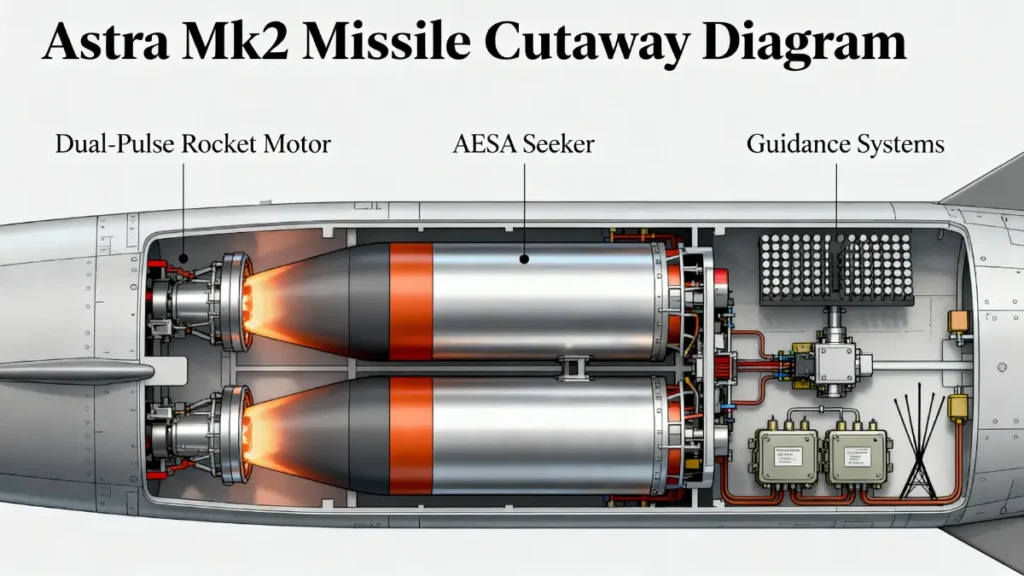
Production: Bharat Dynamics Limited
Bharat Dynamics Limited (BDL), a government-owned company based in Hyderabad, manufactures the Astra missile. In 2022, BDL secured a ₹2,971 crore contract to produce 200 Astra Mk1 missiles. Now, BDL is scaling up for Astra Mk2 production.
Current Production Status:
- Capacity: 25 missiles per year (current)
- Upgrade planned: Doubling capacity to meet Navy + IAF demand
- Supply chain: 50+ Indian companies involved (HAL, BEL, Teledyne Technologies India, private MSMEs)
Indigenous Content Breakdown
- AESA Radar Seeker: Developed by BEL (Bharat Electronics Limited)
- Dual-Pulse Motor: DRDO propulsion experts
- Guidance System: DRDO Aeronautical Development Establishment (ADE)
- Electronic Fuzes and Components: Multiple Indian companies
- Integration and Assembly: BDL
95% indigenous means nearly every component supporting the missile comes from Indian design, engineering, and manufacturing.Timeline: From Lab to Warfighter (The Complete Story)
Here’s how Astra evolved from a concept into a world-class weapon:
Astra Mk1 Journey
- 2014: Astra Mk1 development completes
- 2015-2016: Initial test flights on Su-30MKI
- 2019: Officially inducted into the Indian Air Force
- 2021: IAF begins operational deployment
Astra Mk2 Development
- 2015: Mk2 development initiated to achieve 160km+ range
- 2020: Prototype testing begins
- 2022: BDL given production contract
- 2024: Advanced flight tests with indigenous seeker
Navy Integration Push (Current Phase)
- April 2025: Rafale M deal signed ($7.5 billion, 26 jets)
- October 2025: DRDO announces plans to extend Astra Mk2 beyond 200km range
- November 2025: Navy accelerates Astra Mk2 integration on MiG-29K and Rafale M
- 2025-2026: Weapon firing trials for MiG-29K
- Mid-2026: MiG-29K Astra Mk2 operational capability expected
Future Deployment Schedule
- 2027-2029: Full integration across IAF platforms (Su-30MKI, Rafale, Tejas Mk1A)
- 2029-2031: Rafale M deliveries with Day 1 Astra Mk2 compatibility
- 2030s: Astra Mk3 (300-340km range) development and deployment
- 2030s-2040s: TEDBF (India’s indigenous carrier fighter) will carry Astra Mk2/Mk3
The Global Context: How Astra Stacks Up Worldwide
The Astra Mk2 enters a competitive global market for air-to-air missiles. How does it compare to weapons used by NATO, the US, and Russia?
Global BVR Missile Comparison
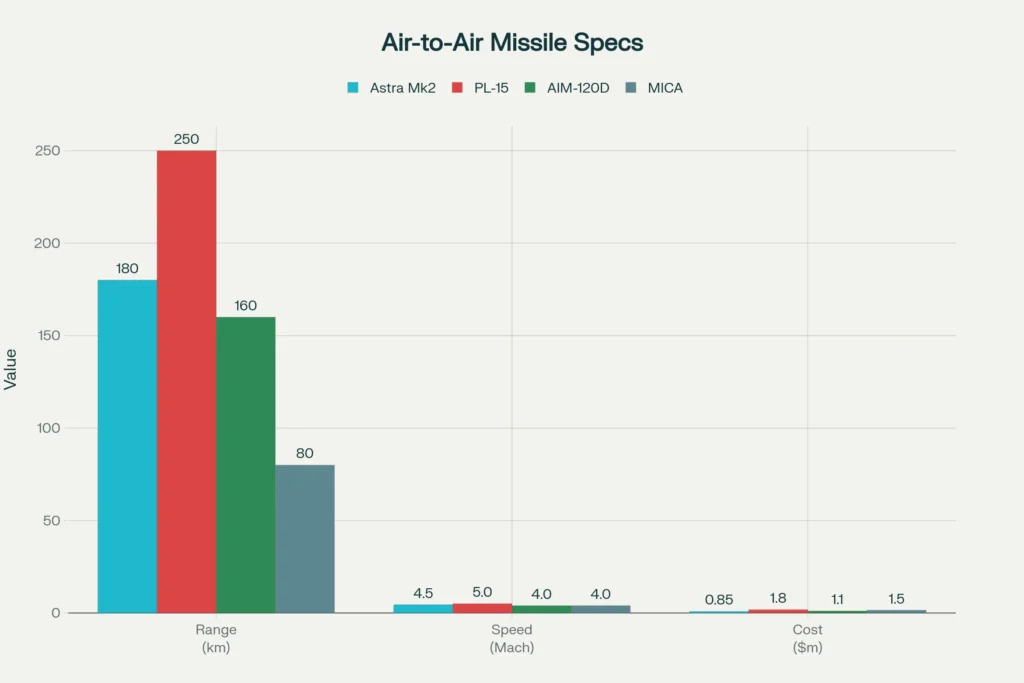
European Option: Meteor Missile (France/UK/Germany)
- Range: 100-200+ km (with ramjet propulsion)
- Cost: Extremely expensive (€1+ million per unit)
- Status: Operational on Rafale, Typhoon, Gripen
- India’s situation: Expensive for bulk purchase; Astra Mk2 is a cheaper alternative
American Option: AIM-120D (USA)
- Range: 160 km
- Cost: $1-1.2 million per unit
- Status: Standard NATO weapon
- Comparison: Astra Mk2 matches performance at 1/3 the cost
Russian Option: R-27/R-77 (Russia)
- Range: R-27 (80km), R-77 (100km)
- Cost: Cheaper but older technology
- Status: Outdated; being replaced globally
- Current use: MiG-29K (being replaced by Astra)
Chinese Option: PL-15 (China)
- Range: 200-300 km (domestic), 145 km (export)
- Cost: $1.5-2 million
- Status: Operational since 2015
- Threat level: High for India (Pakistan has 240 units)
Why Astra Mk2 Matters:
It offers a sweet spot—performance competitive with global options, indigenous development reducing foreign dependency, and lower cost enabling larger purchases and potential exports.Beyond MiG-29K: Future Platforms for Astra Mk2
The Navy isn’t stopping at just these two fighter types. Here’s where Astra Mk2 will be deployed in the coming years:
Current & Near-Future Platforms
Indian Air Force:
- Su-30MKI (existing, integration ongoing)
- Rafale (land-based version, 36 units)
- Tejas Mk1A (indigenous fighter, 83 units on order)
- Tejas Mk2 (enhanced version, development ongoing)
- AMCA (Advanced Medium Combat Aircraft, futuristic 5th gen stealth fighter)
Indian Navy:
- MiG-29K (INS Vikramaditya, integration starting 2026)
- Rafale M (INS Vikrant and future carriers, 2029-2031)
- TEDBF (Twin Engine Deck-Based Fighter)
The TEDBF Game-Changer
India is building its own carrier-based fighter jet called TEDBF (Twin Engine Deck-Based Fighter). This is India’s answer to the American F/A-18 Super Hornet.
TEDBF Specifications:
- First flight target: 2028
- IOC (Initial Operational Capability): 2031-2033
- Production: 57 aircraft planned
- Astra Mk2 integration: Built-in from the design phase
- Replacement: Will gradually replace the MiG-29K fleet
Strategic Importance: By the 2030s, Indian carriers will operate a mix of Rafale M and TEDBF—both fully optimised for Astra Mk2. This creates a formidable air defence network.
What Astra Mk2 Means for the Indian Navy’s Strategy
For decades, the Indian Navy’s primary role was coastal defence. Now, with Astra Mk2, the Navy transitions to power projection and deterrence across the Indian Ocean.
The Three-Carrier Fleet Vision
India is building a three-carrier navy for round-the-clock operations:
- INS Vikramaditya (operational, carrying MiG-29K)
- INS Vikrant (recently commissioned, receiving Rafale M)
- INS Vishal (nuclear-powered carrier, planned, will carry TEDBF + Astra Mk2)
With Astra Mk2 equipped on all three carriers, India establishes air superiority across vast ocean stretches, protecting merchant shipping, securing sea lanes, and maintaining regional stability.
The BrahMos + Astra Combo
The Indian Navy also operates BrahMos missiles (supersonic anti-ship missiles) on destroyers and frigates. Imagine this scenario:
Naval Combat of the Future:
- Astra Mk2 clears enemy fighters from the sky (160km range)
- BrahMos destroys enemy ships before they threaten (300km range)
- Result: Indian carrier group remains untouchable
This combination gives India complete strike capability from air, surface, and subsurface platforms.
What’s Next for India’s Air-to-Air Missiles?
Astra Mk3: The Next Generation (2030s)
DRDO is already developing Astra Mk3 with these features:
- Range: 300+ kilometres
- Propulsion: Solid fuel ramjet (extends range during flight)
- Speed: Mach 5+
- Status: Development phase, operational by mid-2030s
Astra Mk3 significance: Would match or exceed China’s best missiles, establishing India as a peer in air-to-air missile technology.
Integration Across Services
By 2030, all major combat aircraft in the IAF and Navy will carry Astra missiles:
- Fighters in the sky with Astra Mk2
- TEDBF and Rafale M on carriers with Astra Mk2
- Tejas, Mirage-2000, and future platforms with integrated systems
India’s defence export market is growing. Astra could be sold to:
- QUAD members (Australia, Japan, South Korea)
- ASEAN countries (Vietnam, Philippines)
- Strategic partners (Egypt, Greece, Chile)
This would position India as a major defence technology exporter—not just an importer.
What This Means for NDA Aspirants & Defence Enthusiasts
Current Events Connection
This Astra Mk2 integration is exactly the type of defence policy development that appears in:
- NDA Exam (General Studies Part II): Military technology, defence procurement
- CDS Exam: Naval strategy, defence policy
- UPSC CSE: Strategic affairs, indigenous technology
- Defence colleges entrance: Military doctrine and modernisation
Key Takeaways to Remember
- Astra Mk2 = 160-200 km range, outranging Pakistan’s PL-15E missiles
- 95% indigenous, supporting Aatmanirbhar Bharat
- MiG-29K integration by mid-2026, Rafale M by 2029-31
- Costs ₹7-8 crore per unit, vs ₹25 crore for foreign alternatives
- Game-changer for the Indian Navy, establishing air superiority in the Indian Ocean
FAQs|Astra Mk2
1. What is the exact range of the Astra Mk2 missile?
The Astra Mk2 missile has a range of 160 to 200 kilometres. DRDO has announced plans to extend this beyond 200km in the upcoming enhancement phases. This range represents a significant leap from the Astra Mk1’s 110km capability and currently outranges Pakistan’s export-limited PL-15E missiles (145km range).
2. When will Astra Mk2 be deployed on Indian Navy ships and aircraft?
MiG-29K: Weapon firing trials are expected in 2025-26, with operational capability targeted for mid-2026 onboard INS Vikramaditya.
Rafale M: Integration will occur during the delivery phase (2029-2031), with Day 1 operational capability on INS Vikrant and future carriers.
3. How does Astra Mk2 compare to Pakistan’s PL-15E missile?
Astra Mk2 (160-200km) outranges Pakistan’s PL-15E (145km capped at export level). While the PL-15E achieves Mach 5 compared to Astra’s Mach 4.5, the Indian missile features indigenous AESA seeker technology, superior electronic countermeasures, and significantly lower production costs—making it strategically competitive.
4. Why is Astra Mk2 cheaper than imported missiles like the Meteor?
Economies of scale: BDL produces Astra for both the IAF and the Navy, spreading development costs.
Foreign missiles: Meteor costs €1+ million per unit; AIM-120D costs $1-1.2 million. Astra Mk2 costs ₹7-8 crore (~$850,000)—offering superior value.
5. What advantages does Rafale M have over MiG-29K for Astra Mk2 deployment?
Radar capability: Rafale M features Thales RBE2-AA AESA radar (200+ km detection) vs MiG-29K’s Zhuk-ME radar (110km detection). This means Rafale M can fully exploit Astra Mk2’s 160km+ range immediately, while MiG-29K may face radar limitations until radar upgrades are implemented.
Integration timeline: Rafale M arrives with Astra Mk2 compatibility built-in, while MiG-29K requires adaptation work.
Overall capability: built-in Rafale M + Astra Mk2 represents a more complete, future-proof system.
6. Which aircraft will carry Astra Mk2 in the future?
Indian Navy: MiG-29K (INS Vikramaditya), Rafale M (INS Vikrant, future carriers), TEDBF (future carrier fighter)
Indian Air Force: Su-30MKI, Rafale (land-based), Tejas Mk1A, Tejas Mk2, future AMCA (5th generation stealth fighter)
Timeline: Phased integration from 2025 to 2031 across all platforms
7. Is Astra Mk2 truly 100% indigenous, or does it require imported components?
Astra Mk2 is 95% indigenous. The core technology—dual-pulse motor, guidance system, and active AESA radar seeker—is entirely Indian-developed by DRDO and BEL. A small percentage of specialised electronic components are imported for quality assurance, but the missile is fundamentally and strategically an Indian weapon system.
8. When Exactly Will Astra Mk2 Be Operational on Navy Fighters?
Timeline:
MiG-29K: Weapon firing trials in 2025-26; operational capability by mid-2026
Rafale M: Starts arriving in 2029; full integration by 2031
9. Can Astra Mk2 Really Outrange Pakistani Missiles?
Yes. Pakistan’s PL-15E (the export variant sold to them) has a 145km range. Astra Mk2’s 160-200km range outranges it by 15-55 kilometres. In air combat, a 50+ km range advantage is strategically decisive.
10. Is Astra Mk2 Truly 100% Indian-Made?
95% indigenous. Only a few specialised electronic components are imported, primarily for quality assurance. The core technology—seeker, motor, guidance—is entirely Indian.
11. Why Does DRDO Want to Extend Range Beyond 200km?
Because China did. The domestic PL-15 reaches 300km. DRDO wants Astra Mk3 to match this, ensuring India doesn’t fall behind in the long-range missile race.
12. Could India Export Astra Mk2 to Other Countries?
Likely yes, with government approval. Multiple friendly nations have expressed interest. Export would:
I. Generate revenue
II. Strengthen India’s defence diplomacy
III. Boost production volumes
IV. Establish India as a credible defence technology provider
India’s Indigenous Missile Revolution
The integration of Astra Mk2 onto the Indian Navy’s Rafale M and MiG-29K fighters represents something far bigger than just another weapons upgrade. It symbolises India’s transformation from a defence importer to a defence innovator.
For too long, India’s military relied on foreign missiles. Today, Indian scientists and engineers have created a missile that matches global standards, costs a fraction of foreign alternatives, and is entirely made in India. When these missiles are first launched from Rafale M or MiG-29K, it will mark a fundamental shift in India’s military capability and strategic autonomy.
The regional balance is changing. Pakistan’s PL-15E advantage is being erased. China’s long-range missile threat is being countered. India’s three-carrier navy will soon operate with integrated, world-class indigenous air-to-air missiles.
This is Aatmanirbhar Bharat in action
For NDA aspirants, defence enthusiasts, and strategic analysts, watch this space closely. The integration of Astra Mk2 will be one of the defining defence developments of 2026-2031, reshaping India's military doctrine and the regional balance of power in the Indian Ocean.
Why Astra Mk2 Matters for India’s Security
The Astra Mk2 missile integration represents India’s decisive move toward military self-reliance. By equipping Navy fighters with a 160km+ indigenous missile, India:
✓ Closes the capability gap with Pakistan’s PL-15E missiles
✓ Challenges China’s long-range missile advantage in the Indo-Pacific
✓ Protects aircraft carriers with an extended air defence range
✓ Reduces foreign dependency through 95% indigenous manufacturing
✓ Creates high-skilled jobs across the defence sector
✓ Establishes India as a defence exporter, not just an importer
This is a defence technology serving national interest. This is Aatmanirbhar Bharat in action.
Watch closely as trials begin in 2025-26. The integration of Astra Mk2 will reshape India’s military capability and regional strategic balance for decades to come.
